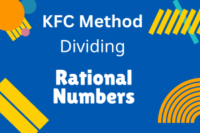Chemistry Class 10 Chapter 7
Published: 15 Dec 2023
Chemistry Class 10 Chapter 7 introduces the concept of “Environmental Chemistry II: Water”. This is mainly chapter No. 15, “Environmental Chemistry II: Water”, of the book of Class 10.
This article consists of Notes, SLO Based Notes and MCQs of chemistry, which cover your course, board papers and clear your chemistry concept for different types of tests.
Chemistry Class 10 Chapter 7 Notes
Environmental Chemistry II: Water
SLO Base Questions
Chemistry Class 10 Chapter 7 MCQs
1. The most important liquid on earth is _____________.(a) Water
(b) Alcohol
(c) Vinegar
(d) None of these
Show Answer
Water
2. Water plays an important role in _________life on earth.
(a) Damaging
(b) Erasing
(c) Sustaining
(d) Maintaining
Show Answer
Sustaining
3. Water is a ___________liquid which makes up the streams, rivers, lakes, ponds and oceans on earth.
(a) Opaque
(b) transparent
(c) Colored
(d) None of these
Show Answer
transparent
4. Water in oceans is mainly found in ________form which is not fit for drinking purposes.
(a) Saline
(b) Distilled
(c) Ionized
(d) All of these
Show Answer
Saline
5. The human body is composed of ________ water by mass.
(a) $ 60 -65 \% $
(b) $ 65 – 70 \% $
(c) $ 70 – 75 \% $
(d) $ 75 – 80 \% $
Show Answer
65 – 70 %
To Download Complete Notes of Chemistry Notes 10 Class, Click on the given link.
6. Human blood plasma is composed of ______of water.(a) $ 50 \% $
(b) $ 73 \% $
(c) $ 92 \% $
(d) $ 81 \% $
Show Answer
$ 92 \% $
7. Water is _________solvent and it is present in nature in impure form.
(a) Universal
(b) Benign
(c) Global
(d) None of these
Show Answer
Universal
8. It has been estimated that total amount of water present on the earth is 1.33 _______ cubic kilometers.
(a) Trillion
(b) billion
(c) Million
(d) None of these
Show Answer
billion
9. The water covers about ____________of the earth’s surface.
(a) $ 50 \% $
(b) $ 60 \% $
(c) $ 70 \% $
(d) $ 90 \% $
Show Answer
$ 70 \% $
10. The_________ contains more than 97% of water.
(a) Ocean
(b) Streams
(c) Wells
(d) None of these
Show Answer
Ocean
11. The fresh water needed for human requirements is only ____________ of the total.
(a) $ 10 \% $
(b) $ 0.2 \% $
(c) $ 5 \% $
(d) $ 0.5 \% $
Show Answer
$ 0.2 \% $
12. The other 2.14% of water is present in the form of ___________.
(a) Ice-caps
(b) Glaciers
(c) Initial water
(d) All of these
Show Answer
All of these
13. ________is the only planet in solar system that contains water.
(a) Earth
(b) Neptune
(c) Jupiter
(d) Mercury
Show Answer
Earth
14. Modern research has also revealed that living things consists of ________of water.
(a) $ 50 – 80 \% $
(b) $ 95 – 99 \% $
(c) $ 83 – 95 \% $
(d) $ 80- 99 \% $
Show Answer
$ 50 – 80 \% $
15. The reactions which takes place in our body occurs in the presence of __________.
(a) Alcohol
(b) water
(c) Chloroform
(d) Vinegar
Show Answer
water
16. Water ________the temperature of earth.
(a) Regulates
(b) Increase
(c) Decrease
(d) Constant
Show Answer
Regulates
17. ____________is a universal solvent, as many substances dissolve in it.
(a) n-hexane
(b) Chloroform
(c) water
(d) Alcohol
Show Answer
water
18. Water is also used to generate ___________.
(a) Electricity
(b) Food
(c) Power
(d) All of them
Show Answer
All of them
19. Before 1776, water was considered as an ___________.
(a) element
(b) Isotope
(c) Compound
(d) Mixture
Show Answer
element
20. It was __________who experimentally proved that water is not an element but is a compound of hydrogen and oxygen.
(a) Matt Henry
(b) Henry Cavendish
(c) Max peter
(d) Neil Bohr
Show Answer
Henry Cavendish
21. Joseph Proust experimentally proved that hydrogen and oxygen combine to form water in the ratio of _____by mass.
(a) $ 1 : 8 $
(b) $ 1 : 2 $
(c) $ 1 : 4 $
(d) $ 1 : 16 $
Show Answer
$ 1 : 8 $
22. Pure water is a ____________ liquid.
(a) Colorless
(b) Odorless
(c) Tasteless
(d) All of them
Show Answer
Colorless
23. The taste of water is due to dissolved __________ and gases.
(a) Acids
(b) Salts
(c) Bases
(d) None of these
Show Answer
Salts
24. Water exists in _____________state.
(a) Solid
(b) Liquid
(c) Gas
(d) All of them
Show Answer
All of them
25. The freezing point of water is _____________.
(a) $ 0 {}^o C $
(b) $ 25 {}^o C $
(c) $ 5 {}^o C $
(d) $ 3 {}^o C $
Show Answer
$ 0 {}^o C $
26. The boiling point of water is _____________.
(a) $ 69 {}^o C $
(b) $ 85 {}^o C $
(c) $ 100 {}^o C $
(d) $ 150 {}^o C $
Show Answer
100 {}^o C
27. Pure water is _____ to litmus. It does not change the colour of the litmus.
(a) Acidic
(b) Neutral
(c) Basic
(d) None of these
Show Answer
Neutral
28. Water is a _______molecule.
(a) Polar
(b) Non-polar
(c) Semi-Polar
(d) None of these
Show Answer
Polar
29. Pure water has density of _________ $ g/cm^3 \ at \ 4 {}^o C $.
(a) 10
(b) 1
(c) 100
(d) 1000
Show Answer
1
30. Water has ______________surface tension.
(a) Low
(b) Intermediate
(c) High
(d) Medium
Show Answer
High
31. Water is thermally ________ compound.
(a) Stable
(b) Unstable
(c) Non-polar
(d) Polar
Show Answer
Stable
32. Complete the reaction.
$ 2H_2O \quad \underrightarrow{2000{}^o C} \quad $ __________?
(a) $ 2H_2 + O_2 $
(b) $ H_2 + 2O_2 $
(c) $ 2H + C_2 $
(d) None of these
Show Answer
$ 2H_2 + O_2 $
33. Water reacts with metallic oxide forming ___________.
(a) Acids
(b) Bases
(c) Salts
(d) None of these
Show Answer
Bases
34. Water reacts with non-metallic to form ______________.
(a) Acids
(b) Bases
(c) Salts
(d) All of these
Show Answer
Acids
35. The reaction in which $ H-OH $ bund of water molecule is broken down by the action of self with water is called _____________ reaction.
(a) Reduction
(b) Oxidation
(c) Hydrolysis
(d) None Of these
Show Answer
Hydrolysis
36. Water is a _____________ solvent.
(a) Universal
(b) Coagulant
(c) Earthy
(d) None Of these
Show Answer
Universal
37. In water molecule, the hydrogen is partially positive while oxygen is partially negative due to ___________ difference.
(a) Electron affinity
(b) Electronegativity
(c) Ionization energy
(d) None Of these
Show Answer
Electronegativity
38. The $ H_2O $ molecule are arranged in a ____________ manner.
(a) Tetrahedral
(b) Torsional
(c) Planner
(d) None Of these
Show Answer
Tetrahedral
39. Dielectric constant is based on the __________.
(a) Ohm’s law
(b) Coulomb’s law
(c) Law of proportion
(d) None Of these
Show Answer
Coulomb’s law
40 Water has high dielectric constant of 80 at ________.
(a) $ 18 {}^o C $
(b) $ 28 {}^o C $
(c) $ 15 {}^o C $
(d) None Of these
Show Answer
$ 18 {}^o C $
41. ___________ is that water, which easily produce good lather and dose not scum with soap.
(a) Hard water
(b) Distilled water
(c) Soft water
(d) None Of these
Show Answer
Soft water
42. ________________ is that water, which produce little lather and from scum with soap.
(a) Hard water
(b) Distilled water
(c) Soft water
(d) None Of these
Show Answer
Hard water
43. Water becomes hard when dissolves________ from soil is.
(a) Gypsum
(b) Limestone
(c) A and B
(d) None Of these
Show Answer
A and B
44. How many types of hard water?
(a) 7
(b) 5
(c) 3
(d) 2
Show Answer
2
45. The temporary hardness of water is due to dissolved calcium bicarbonate and _________ bicarbonate.
(a) Magnesium
(b) Sulphur
(c) Silver
(d) None Of these
Show Answer
Magnesium
46. The permanent hardness of water is due to the presence of ___________.
(a) $ MgCl_2 $
(b) $ MgCO_3 $
(c) $ CaC1_2 $
(d) All of them
Show Answer
All of them
47. Temporary hardness of water can be easily removed by simply __________.
(a) Washing soda
(b) Boiling of water
(c) In exchange method
(d) None Of these
Show Answer
Boiling of water
48. Clark’s method is used to remove the temporary hardness of water on a _________ scale.
(a) Large
(b) Domestic
(c) Small
(d) None Of these
Show Answer
Large
49. Clark’s method is a __________ method.
(a) Physical
(b) Geometrical
(c) Chemical
(d) None Of these
Show Answer
Chemical
50. The permanent hardness of water can only be removed by using chemical, which convert soluble salts into insoluble salts on _________.
(a) Precipitation
(b) Filtration
(c) Ultra sonication
(d) None Of these
Show Answer
Precipitation
51. The permanent hardness of water can be removed by using ___________.
(a) Baking soda
(b) Washing soda
(c) Salts
(d) None Of these
Show Answer
Washing soda
52. ___________ is an ion-exchange resin which is integral part in water treatment processes.
(a) Zeolite
(b) Silicate
(c) Ammonical liquor
(d) None Of these
Show Answer
Zeolite
53. The ion-exchange zeolite is commonly known as ____________ zeolite.
(a) Calcium
(b) Sodium
(c) Aluminum
(d) None Of these
Show Answer
Sodium
54. Sodium zeolite can be used as a _________.
(a) Catalyst
(b) Drying agent
(c) Absorbent
(d) All of them
Show Answer
All of them
55. Soaps are the sodium salts of __________.
(a) Fatty acid
(b) Esters
(c) Alcohols
(d) All of these
Show Answer
Fatty acid
56. When soap is added to hard water, it is ionized into _______ion and stearate ion.
(a) Calcium
(b) Zinc
(c) Sodium
(d) Hydrogen
Show Answer
Sodium
57. ______consumes large amount of soap in washing process.
(a) Soft water
(b) Hard water
(c) Both
(d) None of these
Show Answer
Hard water
58. Hard water is __________ for steam engines and boilers.
(a) Unfit
(b) Useful
(c) Both
(d) None of these
Show Answer
Unfit
59. Use of hard water for drinking purpose for a long period of time causes __________.
(a) Dysentery
(b) Intestinal disease
(c) Stomach disease
(d) All of them
Show Answer
All of them
60. The introduction of the substances which are undesirable and cause contamination of environment is called.
(a) Global warming
(b) Pollution
(c) Ozone depletion
(d) None of them
Show Answer
Pollution
61. When Undesirable foreign substances are introduced into natural water is called ______ pollution.
(a) Water
(b) Land
(c) Air
(d) None of these
Show Answer
Water
62. About ________ of earth’s surface is covered with water.
(a) 50%
(b) 70%
(c) 95%
(d) 80%
Show Answer
70%
63. Water can dissolve vast variety of substances, therefore, it is called ________ solvent.
(a) Universal
(b) Holy
(c) Apparent
(d) None of these
Show Answer
Universal
64. The substances that cause water pollution are called __________.
(a) Solvent
(b) Wastes
(c) Pollutants
(d) None of these
Show Answer
Pollutants
65. The pollutants are dissolved in water from __________.
(a) Soil
(b) Atmosphere
(c) Volcanoes
(d) All of them
Show Answer
All of them
66. According to reports of W.H.O, about __________of the diseases are caused due to the polluted water.
(a) 80%
(b) 70%
(c) 90%
(d) 60%
Show Answer
80%
67. The major source of water pollutants are __________wastes.
(a) Industrial
(b) Agricultural
(c) Household
(d) All of them
Show Answer
All of them
68. Hot water destroys the aquatic life, if the temperature is above ___________.
(a) 30%
(b) 50%
(c) 70%
(d) 90%
Show Answer
30%
69. When untreated water is used for drinking purposes, it cause ____________.
(a) Typhoid
(b) Cholera
(c) Hepatitis
(d) All of them
Show Answer
All of them
70. The diseases that spread because of drinking polluted water are called _______ disease.
(a) Airborne
(b) Waterborne
(c) None
(d) All of these
Show Answer
Waterborne
71. Waterborne diseases are __________.
(a) Bacterial
(b) Parasitic
(c) Viral
(d) All of them
Show Answer
All of them
Chemistry Class 10 MCQs (All Chapters)

- Be Respectful
- Stay Relevant
- Stay Positive
- True Feedback
- Encourage Discussion
- Avoid Spamming
- No Fake News
- Don't Copy-Paste
- No Personal Attacks



- Be Respectful
- Stay Relevant
- Stay Positive
- True Feedback
- Encourage Discussion
- Avoid Spamming
- No Fake News
- Don't Copy-Paste
- No Personal Attacks





